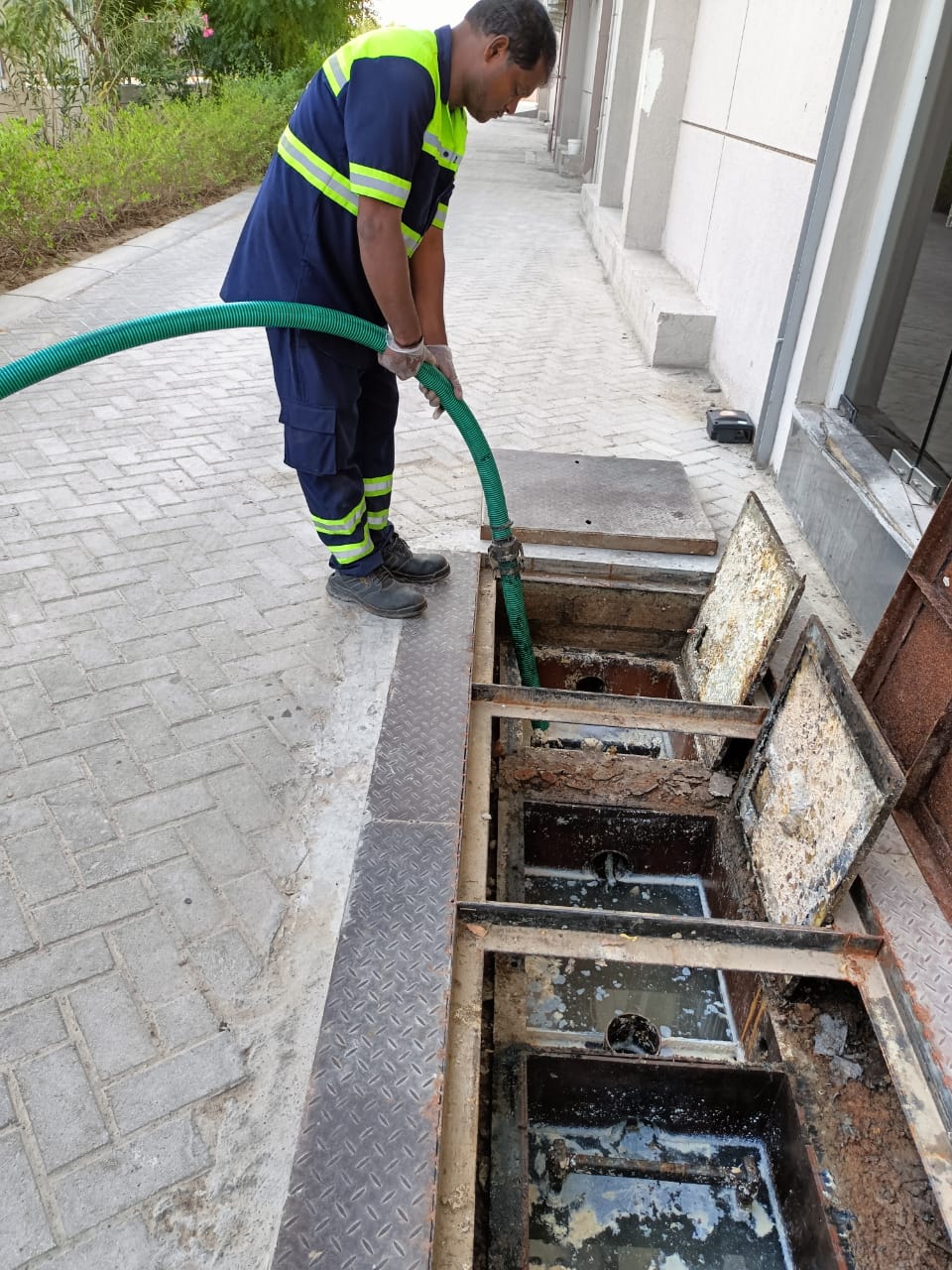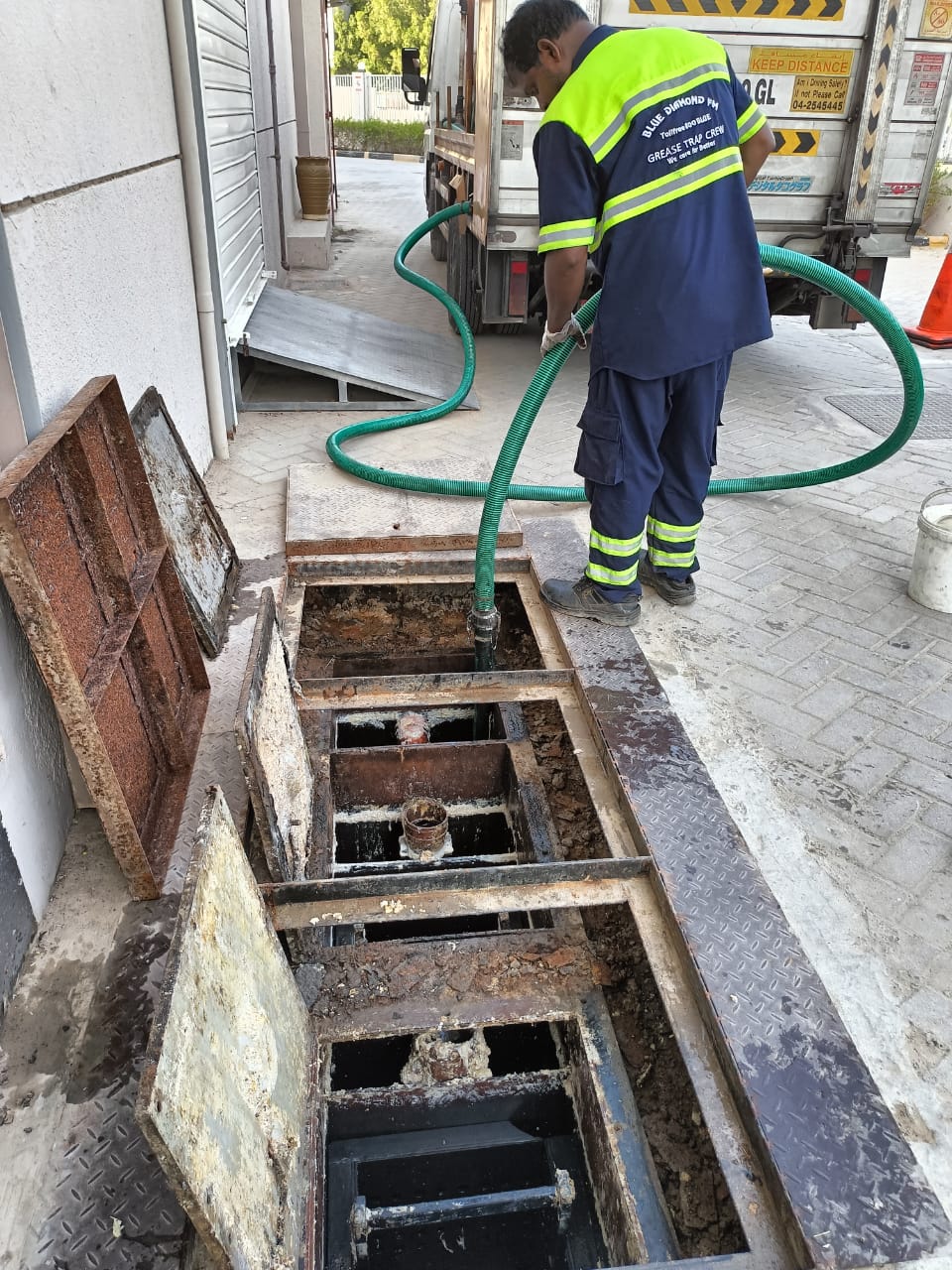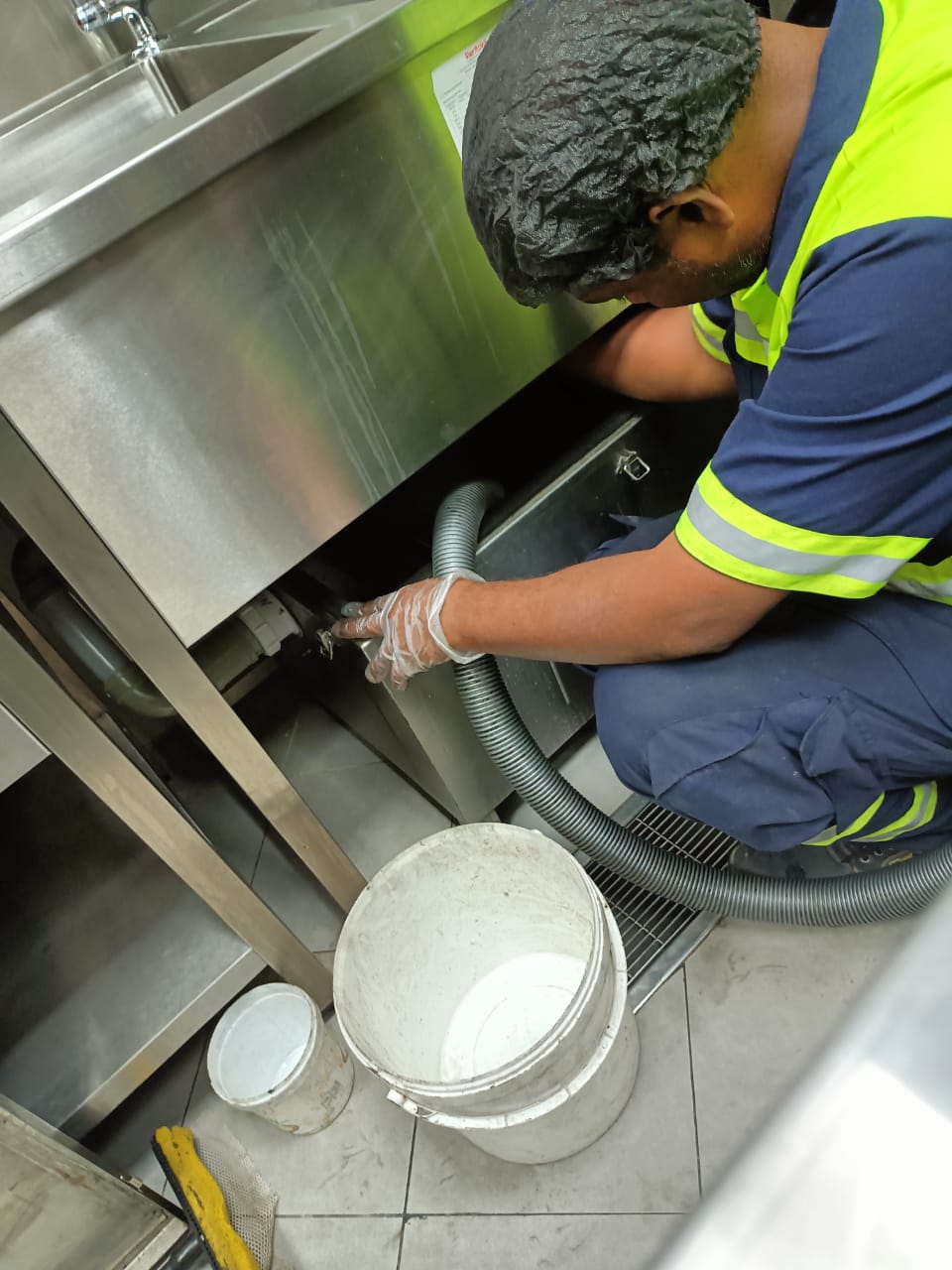What is grease trap?
- greasetrapcleaninguae.com

Table of Contents
Keeping Your Kitchen Flowing Smoothly
Have you ever wondered what keeps a kitchen running smoothly? Well, let me tell you about one important aspect. In our experience working in kitchens, we have learned how crucial grease traps are in preventing grease, oils, and gunk from clogging up drains and causing blockages in the kitchen.
In this blog post, I want to share with you why grease trap cleaning services are an absolute lifesaver. By neglecting grease traps can turn your kitchen into a smelly, slow-draining system!
I will break down how these traps work and why regular cleaning is very important to avoid any messy and expensive problems.
Join me as I uncover the secrets behind keeping our kitchen flowing smoothly, Let’s dive in together and make sure our kitchens stay efficient and hassle-free!
What is a Grease Trap cleaning ?
A grease trap is a crucial component of any commercial kitchen plumbing system. It collects fats, oils, and grease (FOG) from wastewater, preventing them from entering the municipal sewer system and causing blockages.
Grease traps accumulate FOG and solid food particles, leading to reduced efficiency and potential drainage issues.
Benefits of Regular Grease trap Cleaning
Regularly cleaning of grease traps is important for maintaining smooth drainage and preventing plumbing blockages caused by accumulated grease and waste materials.
Here are some advantages of regular grease trap cleaning:
1 Preventing Blockages:
By removing the built-up fats, oils, and grease (FOG), we can ensure that waste water flows smoothly without any interruptions. It helps minimize the risk of blockages and avoids expensive plumbing problems.
Compliance:
Keeping your grease trap clean is crucial for meeting local health regulations. you can avoid fines and penalties associated with non-compliance.
2 Enhanced Efficiency:
A clean grease trap promotes the efficient functioning of your kitchen plumbing system. It helps prevent unpleasant odors and potential backups, ensuring a smooth operation in your kitchen.
Grease Trap installation for Restaurants and Food Establishments
Grease trap maintenance holds utmost significance in the food service industry due to its pivotal role in ensuring a clean, safe, and smoothly functioning kitchen environment.
Installing an effective grease trap system is crucial not only for compliance with local regulations but also for the smooth operation of the establishment and the environment.
Here’s a detailed overview:
A Sizing Matters:
Determining the appropriate size of a grease trap is fundamental. It should be based on the volume of wastewater generated and the types of food prepared.
An oversized or undersized trap can lead to inefficiencies, with an oversized trap occupying unnecessary space and an undersized trap causing frequent backups and issues.
B Placement and Installation:
Proper placement of the grease trap is key. It should be strategically located within the kitchen’s wastewater flow but away from high-traffic areas.
- Professional installation is crucial to ensure the trap functions optimally. This involves connecting it to the drainage system correctly and securing it in place to avoid shifting or leaks.
C Regular Maintenance:
Installing a grease trap is just the beginning. Regular maintenance is essential for its efficient operation.
- Scheduled cleaning and maintenance ensure that the trap doesn’t get clogged, reducing the risk of backups and foul odors. Depending on the usage, frequency of cleaning may vary, but it’s typically recommended every 30 to 90 days.
D Environmental Impact:
Beyond compliance, proper grease trap installation and maintenance contribute significantly to environmental conservation. FOG entering sewer systems can lead to blockages and overflows, causing harm to local ecosystems.
- By containing FOG at its source, restaurants play a crucial role in protecting the environment.
E Upgrading Technology:
Advancements in grease trap technology offer more efficient and eco-friendly options. Some modern traps come equipped with sensors that alert when they need cleaning, while others use biological agents to break down FOG.
- Upgrading to these advanced systems can improve efficiency and reduce maintenance frequency.
F Professional Consultation:
Seeking advice from professionals like us in grease trap installation is highly recommended. We can provide tailored solutions, including the right type of trap and its optimal placement, considering the specific needs and layout of the establishment.
G Educating Staff:
Proper disposal of FOG is not only the responsibility of the management but also the staff. Educating employees about the importance of disposing of fats, oils, and grease in designated containers rather than down the drain is crucial for the effective functioning of the grease trap system.
Grease trap installation for restaurants and food establishments isn’t merely about meeting regulatory requirements. It’s a proactive step towards sustainable waste management, efficient operation, and environmental responsibility within the food service industry.
Signs Your Grease Trap Needs Cleaning
1 Foul Odors and Unusual Smells
One of the primary indicators that your grease trap needs cleaning is the presence of foul odors emanating from drains. As fats, oils, and grease accumulate within the trap, they can decompose, producing unpleasant and pungent smells. These odors often signal that it’s time for a thorough cleaning to eliminate the buildup causing the stench.
2 Slow Drainage and Backups
Another clear sign of a grease trap requiring cleaning is slow drainage or even backups in sinks, dishwashers, or other drainage systems. When grease builds up within the trap, it restricts the flow of water, leading to slow drainage or complete blockages. Regular inspections and immediate action upon noticing slow drainage can prevent more significant issues.
3 Visual Inspection for Grease Buildup
Performing routine visual inspections of your grease trap is essential. If you notice visible grease buildup on the walls of the trap or floating layers of grease, it’s a clear sign that cleaning is necessary. Regular monitoring and proactive cleaning can prevent severe blockages and associated problems.
Why Choose Grease trap cleaning UAE?
1 Extensive Experience
We’ve been dedicated to keeping kitchens flowing smoothly for years. Our highly trained technicians will do simple maintenance to complex cleanings.
No matter the size or situation, we’ll get your grease trap back to peak performance.
2 Advanced Technology
We understand the importance of using the right equipment for grease trap cleaning.we have invested in state-of-the-art tools and technology to deliver exceptional cleaning results.
Our advanced equipment allows us to remove all grease, oils, and solids from your grease traps, preventing clogs and ensuring proper functionality.
3 Customized installation Plans
Regular maintenance is crucial for the longevity and effectiveness of your grease traps. We offer customized maintenance plans tailored to your specific needs and requirements.
Our team will work closely with you to identify the most suitable cleaning schedule, preventing any potential issues and maintaining compliance with local regulations.
4 Environmental Responsibility
At our cleaning service, environmental responsibility is a core value we prioritize. We are dedicated to sustainable practices, adhering to eco-friendly methods, and disposing of waste materials in line with industry standards.
Our commitment ensures that our cleaning procedures have a minimal environmental footprint.
5 Convenient and Affordable:
We offer flexible scheduling and competitive rates to make grease trap cleaning a hassle-free experience.
6 Peace of Mind:
Licensed and insured, we’re the trusted choice for grease trap cleaning.



How often should I clean my grease trap?
Can I clean the grease trap myself?
What happens if I don't clean the grease trap regularly?
Are there eco-friendly methods for grease trap cleaning?
How do I identify a malfunctioning grease trap?
Is grease trap cleaning necessary for small kitchens too?
Share this
Book An Appointment Today
Blue Diamond would like to hear from you. if you have business inquiries. Get in touch with us.
